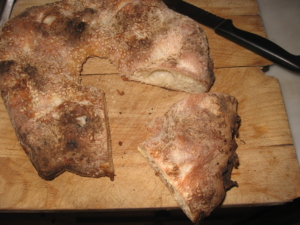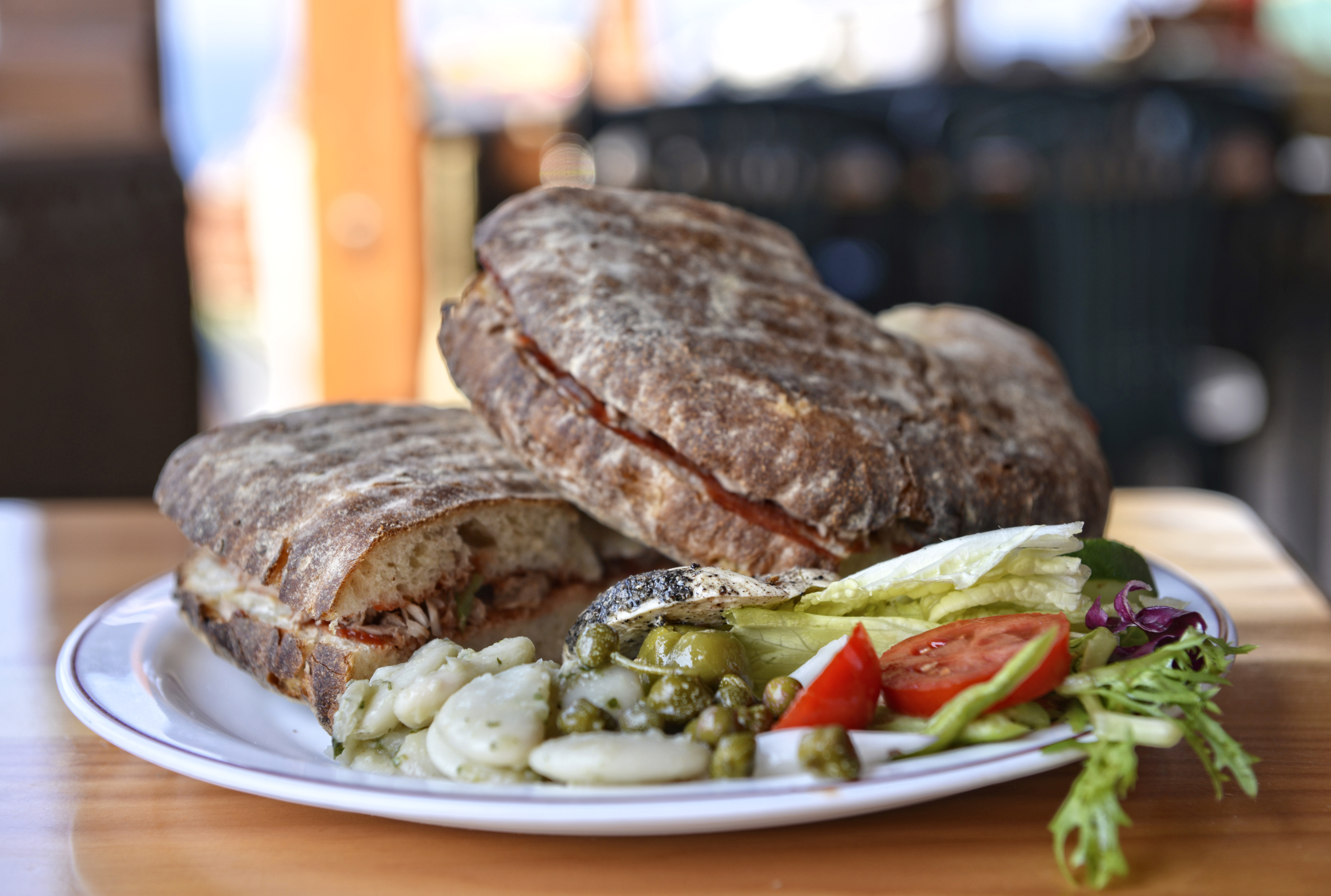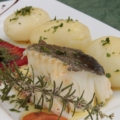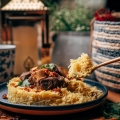In Maltese tables, bread holds a place of honor. Italy is famous for its pizzas – either the famous Neapolitan or the crispy Roman pinsa. France, for its tasty baguettes. But Malta’s baking tradition has elevated the making of this staple food to an art and a symbol of local identity, summarizing the history of the archipelago itself in every humble, savory loaf.
Enter hobza and ftira, our daily breads
Hobza is the Maltese bread par excellence. It is characterized by its crisp, golden crust and soft, fluffy interior. This rustic bread, reminiscent of homemade bread, is made with simple, wholesome ingredients: flour, water, yeast and salt. Nothing else is necessary. Its taste and texture make it ideal to enjoy on its own, or with other local dishes –especially with Maltese kapunata.
But if hobza can be considered the Maltese daily bread, ftira can be a more complex delicacy. This Maltese hybrid of pizza-focaccia-bagel, baked in wood-fired ovens, has a round, flat shape and is filled with a variety of local ingredients such as tomatoes, olives, tuna, onions, capers –and, occasionally, mint leaves. Ftira is a true culinary experience that brings together the creativity, flavors, and richness of the Maltese territories to the point that it has been proposed as a UNESCO Intangible Cultural Heritage of Humanity, an acknowledgement of its fundamental role in the daily life of the island.
Ingredients make the difference
At the heart of Maltese bread is the use of simple, high-quality, local ingredients. Local stone-ground durum wheat flour preserves the authentic taste of these breads and gives them their characteristic rustic texture. Water from local sources adds the necessary final touch, making each loaf a celebration of local traditions.

Natural yeast, often passed down from generation to generation, is the key element that brings the dough to life, contributing not only to the distinctive aroma of Maltese bread, but also to its lightness. A pinch of sea salt and sometimes some seeds or herbs complete the recipe, enhancing the variety of flavors that are typical of the Maltese landscape.
The magic is in the process
Ingredients are fundamental, but a great deal of the magic is found in the hands of the bakers, who carefully work the dough to make it soft, elastic, and homogeneous. The rising, one of the most delicate moments in the process, must take place in a warm and humid environment, where the natural yeast makes the dough grow slowly, giving it the right texture.
Then comes the shaping of the hobza and ftira: each loaf is carefully molded, giving it the traditional shapes that everyone in Malta recognizes. The final stage, baking, takes place in traditional wood-fired ovens. The high temperatures result in a bread with a crisp, well-browned crust, while the inside remains soft, fluffy, and light. The aroma emanating from the ovens is truly invigorating, and in many places it is common to see families bringing their dishes to be baked in the local ovens on Sundays, keeping alive a centuries-old tradition. It is a custom that strengthens the sense of community and celebrates the value of bread as a symbol of sharing.
The granaries of the Knights of St. John
The Knights of St. John, who arrived in Malta around 1530, built underground granaries in the capital to store grain reserves, aware of the importance of bread for the survival of the population. This proved particularly useful during the Great Siege of 1565, when the Ottoman Empire, led by Suleiman the Magnificent himself, tried to conquer Malta –and failed spectacularly. These granaries were abandoned in 1962, after being used once again during WWII.
The feast of Casal Fornaro
Ħal Qormi, an inland Maltese town, became famous as Casal Fornaro (“the baker’s village”), a place where the art of baking flourished.
Even today, Ħal Qormi keeps its legacy alive through the Casal Fornaro Festival, an annual event that celebrates the island’s baking tradition at the end of September. During the festival, visitors can watch baking demonstrations in ancient ovens and discover first-hand the secrets of this art.
During your visit to Malta, treat yourself to a slice of hobza or a stuffed ftira, and indulge in the flavors that tell the ageless histories of this fascinating archipelago.





